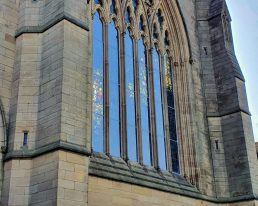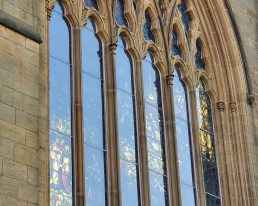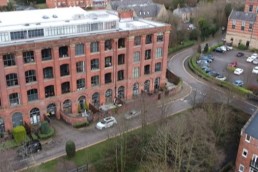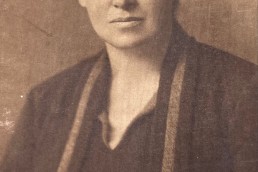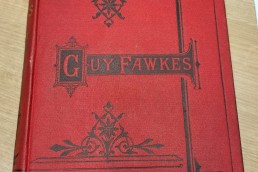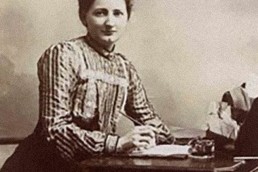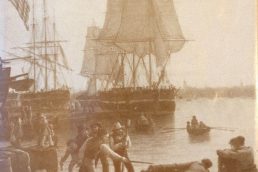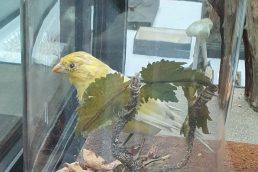In 1871, the Parish Church of St. Peter’s in Bolton was entirely re-built after its original construction in the 15th century. The construction was designed by Lancaster architect, E. G. Paley, and was funded by a local cotton spinner and banker, Peter Ormrod.
Demolition of the church began in 1866, which revealed many pre-Norman stones, as well as other fragments of eleventh, twelfth and thirteenth-century crosses, stones and statues. Among the ruins, were:
‘the broken head of a supposed Irish cross… probably of the tenth century; part of the shaft of a cross bearing a representation of Adam and Eve, with the apple between their lips, and an upturned hand: and a stone with a carving of a nondescript monster’ (S.W. Partington, 1909, p.117).
Due to the fact this period saw the Danes ruling Ireland and the Isle of Man, it is safe to assume that ‘this memorial was erected under their influence and direction.’ (ibid). The origin of the artefacts uncovered indicated that, before it’s erection in the fifteenth century, two previous churches had also existed on that very same site: one Norman, and one Anglo-Saxon (1911). The demolished fifteenth-century structure is said to have been squat, with an ‘embattled west tower… north and south aisles and a south porch’ (ibid). Though due to the growing population of Bolton during the Industrial Revolution, the church became altogether too small and in a state of disrepair, and so the process of demolition began.
Unfortunately, I have been unable to go inside the church where these artefacts are on display, but I did have the honour of visiting St Peter’s Church on a warm and sunny morning, and I took my camera and had a stroll around the grounds. The height of the church (83ft) makes you feel as though you are simply a blade of grass, looking up at the spires, admiring the immensity of the structure from the ground. Though, I’d quite like to be a blade of grass, standing in the shadow of such a beautiful building; watching as patrons would trudge through the snow; listening as the rain would batter the centuries old stonework of its exterior; how the sun would illuminate the carvings surrounding the door. And the beauty of the stained-glass windows is exquisite. Thankfully, the sun was just high enough so that I could admire the detail of the windows and the intricacy of the images depicted.
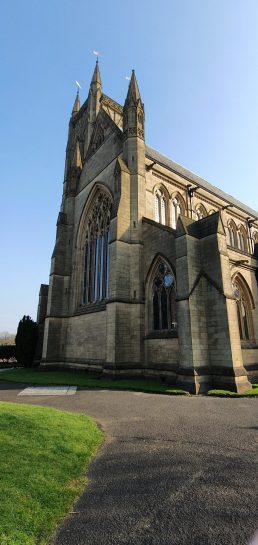

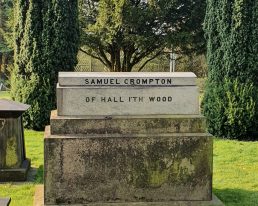

I snapped a few photographs before carrying on with my walk, and it wasn’t long before I found the resting place of a Mr Samuel Crompton. Upon doing some research, I discovered that Samuel Crompton was a pioneer of the spinning industry, and he invented the spinning mule; a machine which ‘revolutionized the industry worldwide’ (Jackson, 2006).
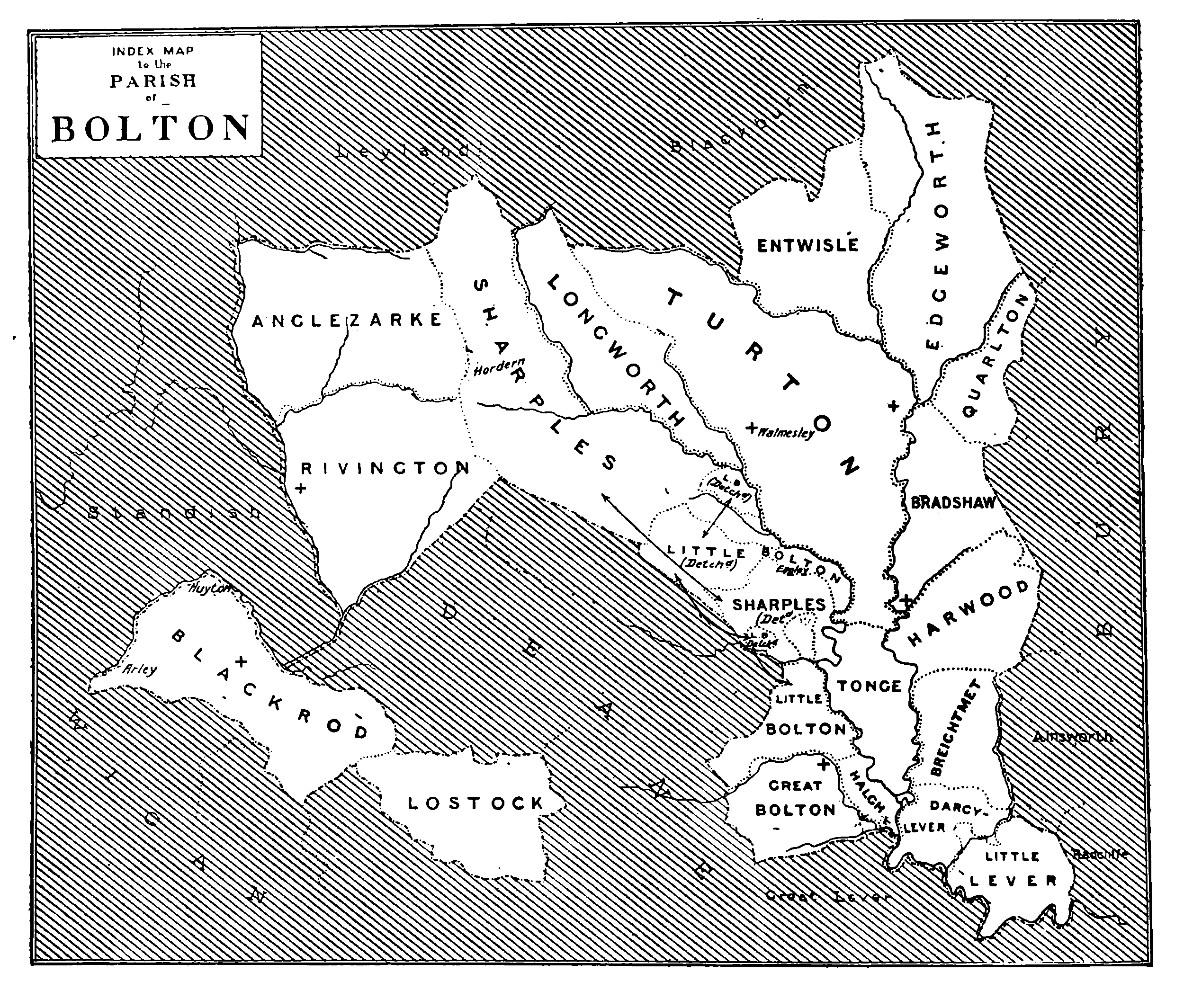

Though I have lived in Bolton my entire life, I had never entered the grounds of the church before writing this article, yet I frequent Churchgate where St Peter’s is located almost every day. To live in a town with such a rich history is an incredible honour, and upon exploring the history of the Parish Church in particular, I feel extremely humbled to be in its presence; to stand where eleventh-century artefacts have been buried for centuries; where the stained-glass windows leave dancing rainbows on the ground, and where incredible men like Samuel Crompton have been laid to rest.
Bolton truly is a town where each and every cobble stone you walk across can tell the stories of a thousand people, and every artefact uncovered can tell the stories of people one thousand years ago.
Bibliography
Jackson, Tim (2006). The Fashion Handbook. Routledge.
Partington, S.W. (1909). The Danes in Lancashire. Sherratt & Hughes. United Kingdom.
‘The parish of Bolton-le-Moors’, in A History of the County of Lancaster: Volume 5, ed. William Farrer and J Brownbill (London, 1911), pp. 235-243. British History Online <http://www.british-history.ac.uk/vch/lancs/vol5/pp235-243> [Accessed 15 March 2022].
Bibliography
Colby, Robert A. (1985) “Tale Bearing in the 1890s: The Author and Fiction Syndication”. Victorian Periodicals Review. Vol.18, No.1, pp. 2-16.
Hilliard, Christopher (2009) “The Provincial Press and the Imperial Traffic in Fiction, 1870s-1930s”. Journal of British Studies. Vol.48, No.3, pp. 653-673.
Johanningsmeier, Charles (1995) “Newspaper Syndicates of the Late Nineteenth Century: Overlooked Forces in the American Literary Marketplace”. Publishing History. Vol. 37, No.1, pp. 61-82.
Jones, Aled (1984) “Tillotson’s Fiction Bureau: The Manchester Manuscripts”. Victorian Periodicals Review. Vol.17, No.1, pp. 43-49.
Singleton, Frank (1950) Tillotson’s 1850-1950: Centenary of a Family Business. Bolton: Tillotson & Son Ltd.

